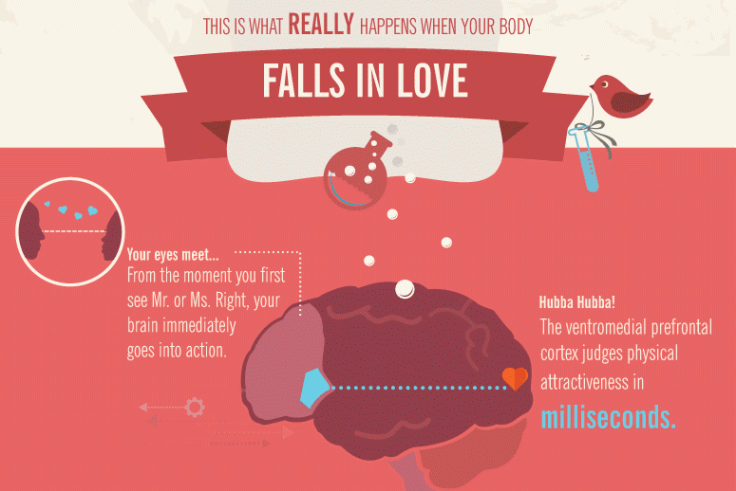Your Chemical Romance: How A Love Connection Can Change Your Body's Chemistry

Falling in love takes a physical toll on our bodies in the most unexpected ways including a racing heart, sweaty palms, and shaky knees. These external signs are apparent to the naked eye, but what happens to the body internally that makes us feel oh so good is seldom seen. Our body’s chemistry is rewired when we’re in love as the same chemical processes seen in addiction are activated when we are with Mr. or Ms. Right.
The chemicals that go through our brain when we’re in love primarily serve one purpose — to procreate. The moment we meet Mr. or Ms. Right, the brain’s ventromedial prefrontal cortex — the area that judges attractiveness in milliseconds — is immediately activated, according to Propoint’s infographic, “This is Your Body in Love.” However, falling in love is more than just attraction. Pheromones, chemicals found in human sweat, have an effect when it comes to human sexual attraction. They are known to be essential when it comes to insect love.
Falling in love involves one very important muscle — the heart. Norepinephrine, which is similar to adrenaline, produces the racing heart and excitement felt during the attraction phase that evolves into romantic passion and then into attachment, or commitment. These two chemicals produce elation, craving, and focused attention which leads to an overwhelming fixation for the object of our desire.
When it comes to matters of the heart, our body can lose control and send us into overdrive.




























